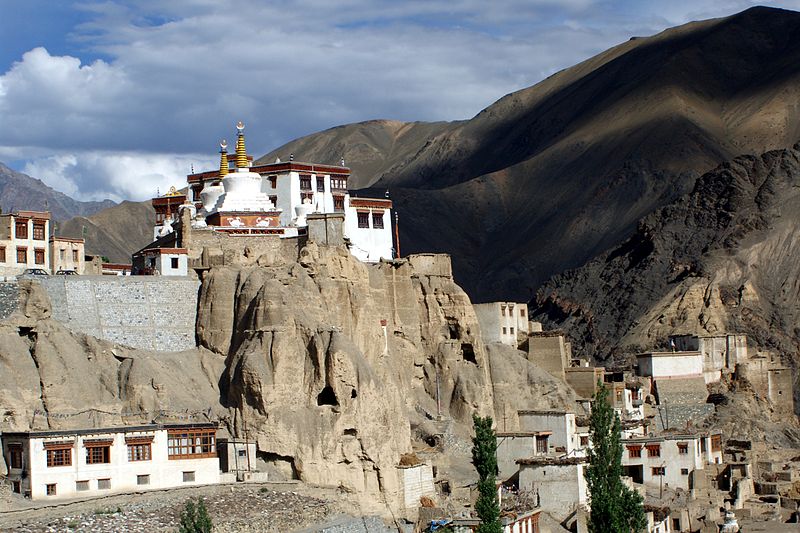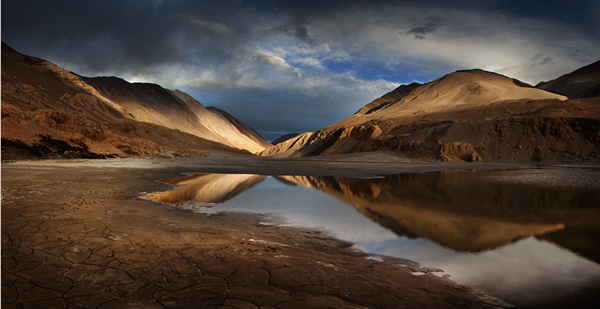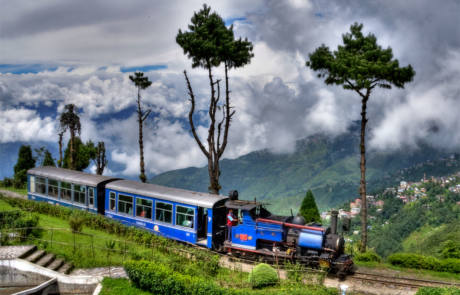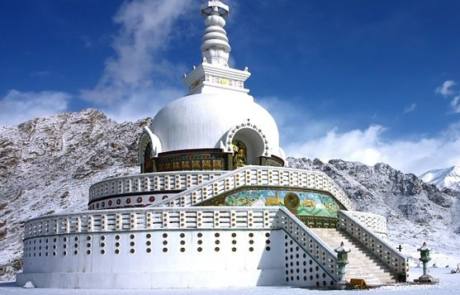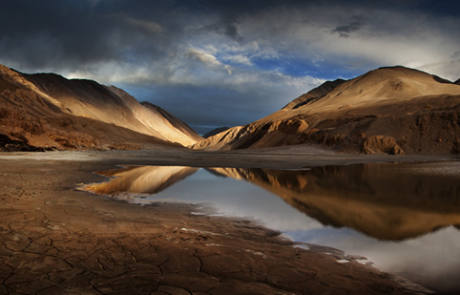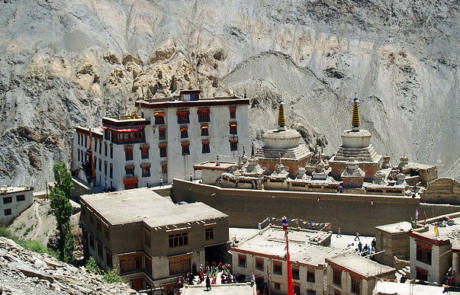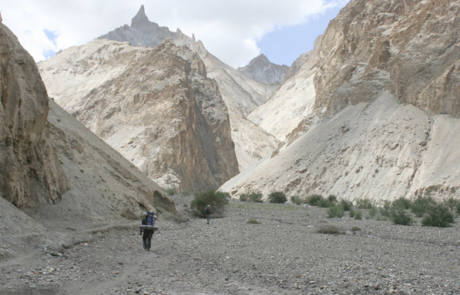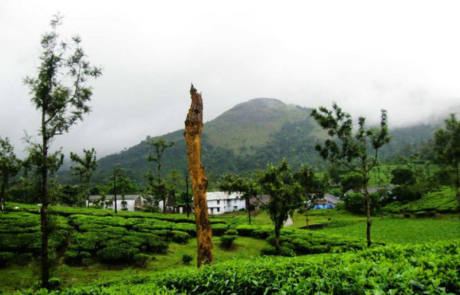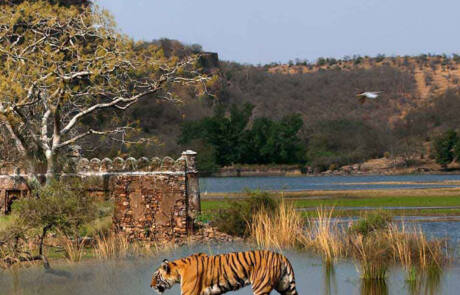13 DAYS/12 NIGHTS
Want to Know More About The Tour?
ABOUT
One of our fantastic journeys, combining the two different points of India . In 14 days, visit the monuments of Old and New Delhi, the breathtaking TajMahal and the Agra fort. A visit to the beautiful pink city of Jaipur the Capital City of Rajasthan & Later Exploring the Breath Taking Scenery of the Leh Region while Exploring the Routes of Budhisim in the far corners of Leh Region with our Expert Guides
Pre-departure planning is important. Here are certain things you should watch for and plan for.
Visas
Check with the Indian consulate or embassy in your country to find out if you will need a visa to visit the country of your destination, especially for an extended period of time. Some countries have extremely detailed and complicated entry/departure laws, and treat visits of a week or two very differently from longer stays.
Money
If you’re traveling to one area, check the cost of living there. If it’s high you’ll probably want to budget more carefully and save some money before leaving. The lower the cost of living the less you’ll have to save, but be sure to have a back up reserve in emergency cases.
General Tips
Talk to other people who have done a similar trip.
If you don’t know anyone personally, try any of the dozens of online travel websites full of first-person travel stories covering every possible type of trip.
Plan big and loose. Read everything you can about the area.
There may be sights and attractions you didn’t know about. A rough outline of your trip might have three or four target points and a variety of ways to get between them.
You don’t want to find out that the weather isn’t what you thought, or the guide book was incorrect, after committing to 6 weeks in a specific spot.
Some trips will allow you more leeway than others. Travel plans in Asia can often be made day-by-day while summer travel in Europe should be organized at least a few weeks ahead, unless you’re prepared to hunt around for hotel rooms and train seats.
Set up a pre-trip timeline so you don’t end up with a full to-do list during your last week of work or school.
Things to consider are doctor’s visits for a check up, inoculations, and prescription refills; purchasing plane tickets; renewing passports and obtaining visas and other documents.
Check your insurance coverage abroad and purchasing additional travel insurance if needed. Don’t forget visiting friends and family members!e
The longer the trip, the lighter you should pack. This might seem strange, but it’s true you can afford to lug a heavy bag around for a week or two, but do you want to have anything extra for a year?
Stick to the absolute basics and know what you can and cannot buy at your destination(s). There’s no point in bringing 6 months of toothpaste to Europe or buying a sarong at home to take to the tropics. If you are visiting several climates, try to arrange it so you visit the warmer places first and coldest last. That way you can purchase sweaters and long pants and not have to carry them any more than needed. Alternately, visit cold climates first and then ship unneeded layers home — or sell them off.
A good rule of thumb is to bring one outfit for the hottest day you’re likely to encounter, one for an average day, and one for the coldest.
Make sure everything goes with everything else (if that’s important to you), and remember that layers are always best.
Be prepared for uncomfortable trips. You will often find yourself in a busy, cramped, economy class environment and it could be for many hours – especially long plane trips.
If you want to arrive at your destination refreshed and able to enjoy the sights, then try a good quality travel pillow to support your head, some ear plugs to block out the screaming babies, and an eye cover to block out the sun or cabin lights.
Just avoid those cheap U-shaped pillows from airport shops – your head drops forward and you wake up with a stiff neck.
Make contact with the locals before you go.
Maybe you have a friend-of-a-friend or a foreign exchange student from high school you remember, or just found a friend through a travel web site; almost everyone is happy to welcome a foreign visitor to their home town. This might be as elaborate as a home-stay for a few weeks, or just coffee in their home town or dinner at a locals restaurant.
Getting Around
Make your own way or if there are too many great things to see, follow the lead of a guided tour.
A perfect city for exploring on foot with a shop around every corner. Much of the inner city can be walked without trouble, however, in parts walking includes crowds, uneven streets, heavy traffic, and skinny sidewalks. If that’s a problem, there are plenty of taxis to ride in and scooters to rent.
How to Travel
- Subway – The metro is the fastest transportation. Running 5 am to 10 pm every day in all the Major Cities of India.
- Bus & Train – Operated by an independent organization, buses, and trains include wifi access for the public. You can take any bus or train marked with the (B Public) sign for free.
- Taxi – Available in all parts of the city. From a restaurant or hotel you can have them call the city taxi service.
- Car – Rental cars are easy to get and hotels have good parking prices. Once in the main city, you can often walk so we suggest returning the when you arrive.
- Bike – The best way to get around, other than walking, is by bike. If you don’t mind hills, you can bike anywhere. If that’s not for you, stick to the inner city with your bike.
Mini Trips
Just a few miles away you can explore the history and legacy, drink wine and relax. You can wander the hills or be lulled by the fountains. If you have time, the attractions can fill 3 days. We’ve highlighted the best ones here.
Tours
Because of the number of sights to see, some first-time visitors should start with an organized tour. Some things can be covered in-depth, others are just useful for getting your bearings.
The leading tour operators use local historians to lead their tours. Guides offer walking tours, including visits to monuments, museums, and historic locations, as well as eating tours. Tour prices can be high, but most participants consider them a trip highlight. In addition, there are many family related tours, sights, and more appealing activites for children.
Walking tours, like the 3-hour ghost tour, is exclusive in the early evening. A bus excursion ruins special tours as you’ve never seen. Also worth consideration, a group of art historians and architects do a theatrical retelling of dramatic scripts. Go on a tour, and expect guides to break out into a rendition of “Singing in the Rain”, it’s a lot of fun.
- Visit the Old & New Delhi
- See the world famous TajMahal at sunset or sunrise
- Take a Elephant Ride to the Amber Fort and Walk around City Palace of Jaipur.
- Visit Leh to see the Breath taking views of Leh region & Its Monasteries.
T ravel Resources
Travel planning is about more than just knowing where you’re going. Prepares to navigate, take control and be ready for anything. This section helps you steer clear of disaster and stay open enjoy the unexpected.
Quick Tips
- Banks – Open Monday to Friday 9am to 2pm. Some banks are closed for lunch.
- Emergencies – For police, dial a local phone number; for ambulance call a hospital.
- Internet Access – Wifi is standard in most hotels and free in many coffee shops.
- Mail – Buy stamps at the Post Office. Convenient post offices are located all cities. Most are open Monday to Friday 9am to 3pm.
- Safety – Pickpocketing can be a common problem. It is suggested for men to keep wallets in their front pocket. Purse snatching also occurs at times.
Visitor Information
This site contains information with a very personal and friendly structure. It also has great links to other related sites online.
Information, internet access, maps, and train passes are available at local Tourist Information terminals. These are located at various sites around the city. Expect a wait if you arrive late in the afternoon or during lunch time. Local travel agencies are also helpful for quick information and finding hotels. There is no service charge for these services. Hours are Monday to Friday 9am to 5pm, and Saturday 10am to 2pm.
Transportation
Getting in from the airport and other arrival locations. Travel planning is about more than just knowing where you’re going. Prepares to navigate, take control and be ready for anything. This section helps you steer clear of disaster and stay open enjoy the unexpected.
- Plane – Flights arrive at the main airport near city center. If flying from European cities, you might land at a connecting airport. There is a tourist information office at the Terminal E, international arrivals, open 8am to 6pm.
- Train – A train station is on the lower level of the airport. To get into the city, follow the marked signs.
- Taxi – From the airport there is a flat-rate for the 1-hour trip, depending on traffic. Hotels charge up to $80 for shuttle service.
- Train & Bus – Trains and buses arrive a city center. This is the transportation hub for the city and is surrounded hotels.
A perfect place for exploring on foot, with local shops around every corner. You will eventually walk somewhere, it’s just going to happen. If you don’t like crowds, uneven cobblestones, heavy traffic or narrow sidewalks, take a taxi or rent a scooter.
Morning arrival in the capital of India, where you will meet your guide at the airport. By late morning the city tour of Old Delhi begins. First, you pass the mighty Red Fort and then visit the Friday Mosque and the Mahatma Gandhi memorial Raj Ghat. The modern capital presents itself in the government district with administrative buildings, wide shopping streets, and the India Gate. Humayun’s Tomb, then the visit, is considered the precursor of the TajMahal.
Today you will make your way into the two-thousand-year-old city of Agra. After a brief tour stop at the Tomb of Emperor Akbar at Sikandra located, built-in 1630 TajMahal in Agra. It shows the great love of Moghulkaisers Shah Jahan for his wife MumtazMahal.
Visiting the Red Fort built in the 16th century, one of the largest forts in the world, begins this exciting day of sightseeing. On the way to Jaipur stop at a world-famous “ghost town” deserted desert town of FatehpurSikri. Finally, Jaipur, the capital of Rajasthan state is one of the most colorful cities in India. Why the Old Town shines in pink color, learn from your guide.
The first destination is the Amber Fort, where you will visit the Grand Palace complex. In Jaipur, you will experience the facade of the Palace of Winds, a visit to the city palace, and the “open-air observatory” Jantar Mantar more highlights.)
Back in the capital, where the Qutub Minaret with a 73-meter-high Victory Column impressed. It recalls the days of the Muslim Moghulherrschaft in India. Guests can also enjoy on the morrow, which takes you into the mystical world of the Himalayas and Tibetan Buddhism.
Early in the morning, you fly towards the snow-capped Himalayan peaks and are reached by a short flight, the capital Leh. Guests can unwind on the first day some rest to adjust to the unfamiliar altitude of 3,600 meters. In a relaxed Bazaar stroll, you make your first acquaintance with one of the highest cities in the world.
The whole day is reserved for the impressive Hemis festival. The monastery with 500 monks of paramount importance. You will be fascinated by the expressive symbolism of the mask dances that celebrate the birth of Guru Padmasambhava, the founder of Tantric Buddhism. And be there when the impressive Thangka of the Acclaimed is revealed in the courtyard!
Along the Indus River, through the barren but fascinating mountain landscape of Ladakh, the path of the monasteries Likir and AlchiPhyang leads to one of the oldest and most important monasteries of Ladakh. It ranks among the World Heritage Sites by UNESCO. The part, 1,000-year-old temple, and frescoed walls breathe true story! Overnight in tents in Ulley.
The RotmützenklosterLamayuru is the oldest and around 150 monks still one of the largest monasteries of Ladakh. As a honeycomb nest sticks it on the rocks, nestled in a spectacular landscape erosion. In the afternoon, you will learn about the lonely monastery Ridzong. With around 40 monks it adheres strictly to the rules and therefore enjoys the highest reputation.
Use the time to take a walk, before heading back to Leh. It offers a visit to the castle ruins Basgo another UNESCO World Heritage Site and as an encore a spectacular view. After arriving in the capital you can make the bazaar streets unsafe. In the Tibetan and Kashmiri traders have nice souvenirs can acquire. And remember never to act!.
First insights into mysticism Tibetan monk culture of the 16th century to win the visit of Spituk Monastery. The ruins of the Leh Palace, a miniature version of the Potala Palace in Lhasa, offer a beautiful view of the city. Continue to the monastery and Shanti Stupa. Built by a Japanese peace initiative in the Changspa Hill and inaugurated in 1985 by the Dalai Lama, this modern place attracts many visitors from all over the world.
Full-Day in Leh.Overnight at Hotel.
Morning flight back to Delhi, on reaching Delhi you will be met and transferred to Delhi International Airport.
RELATED TOURS:


